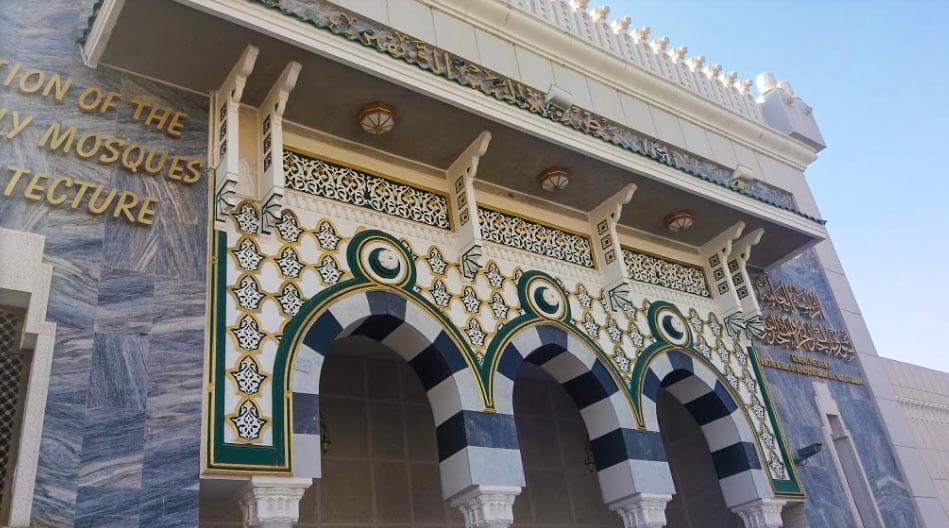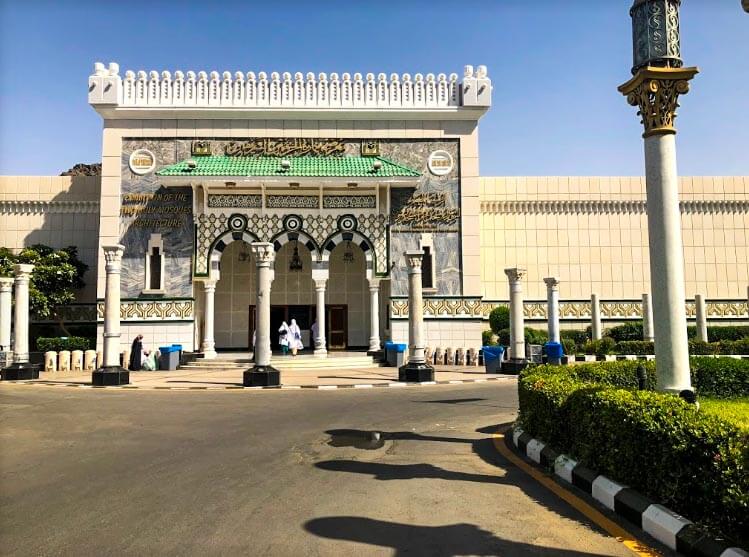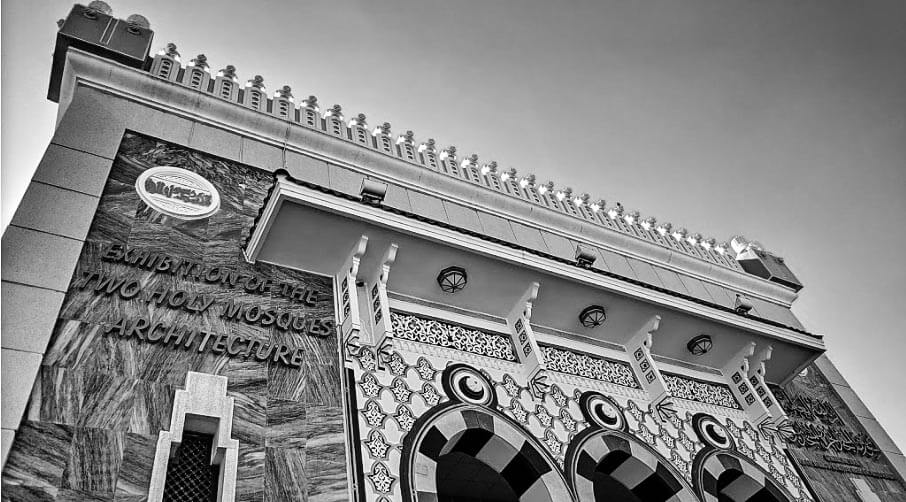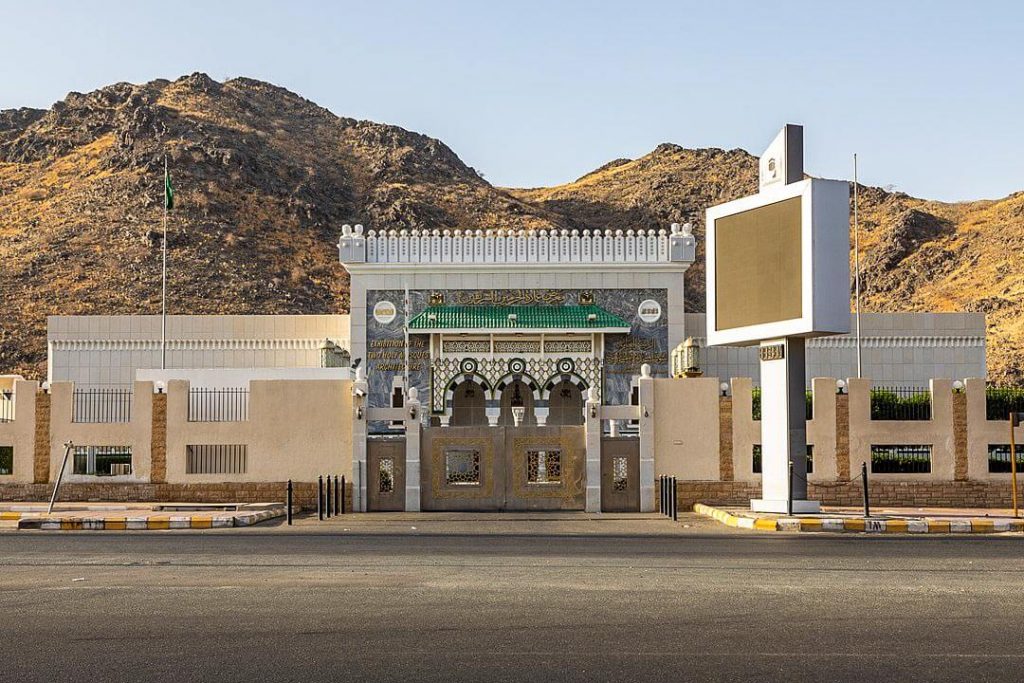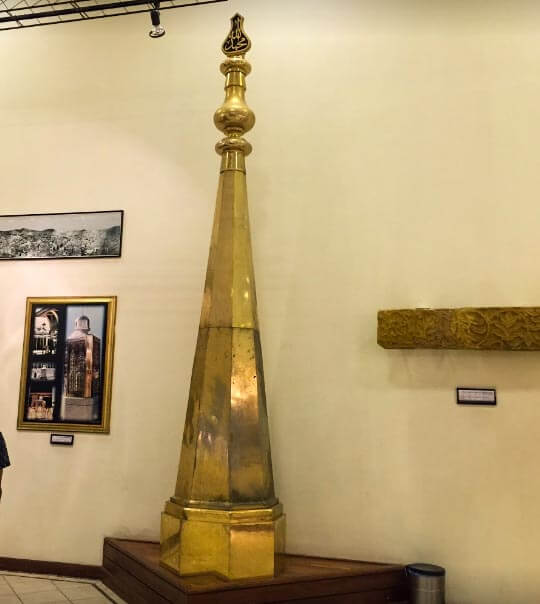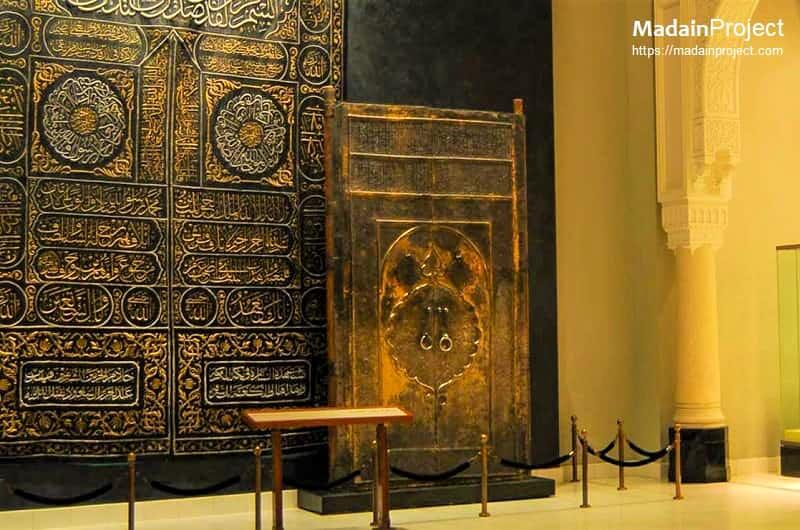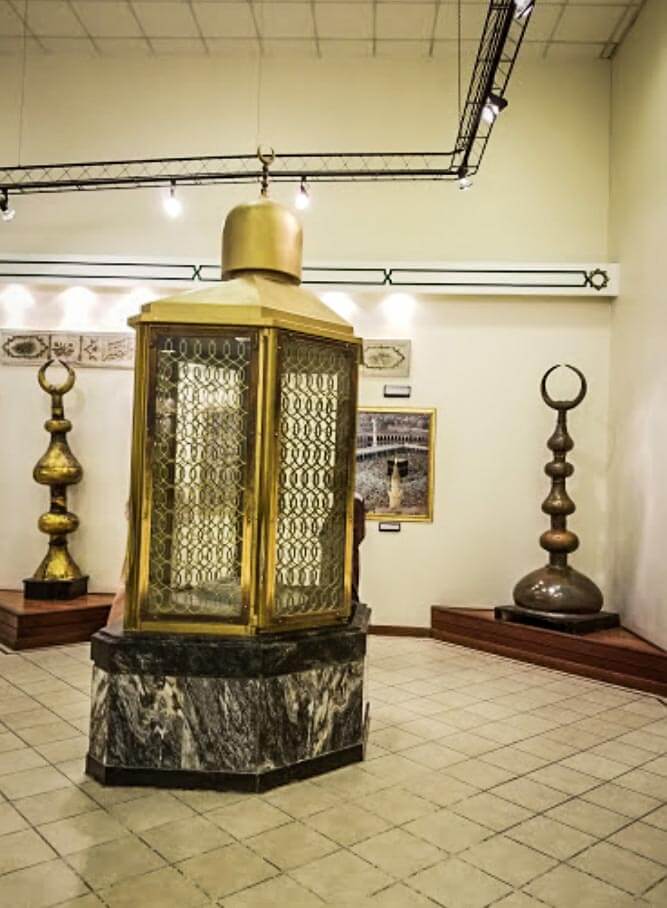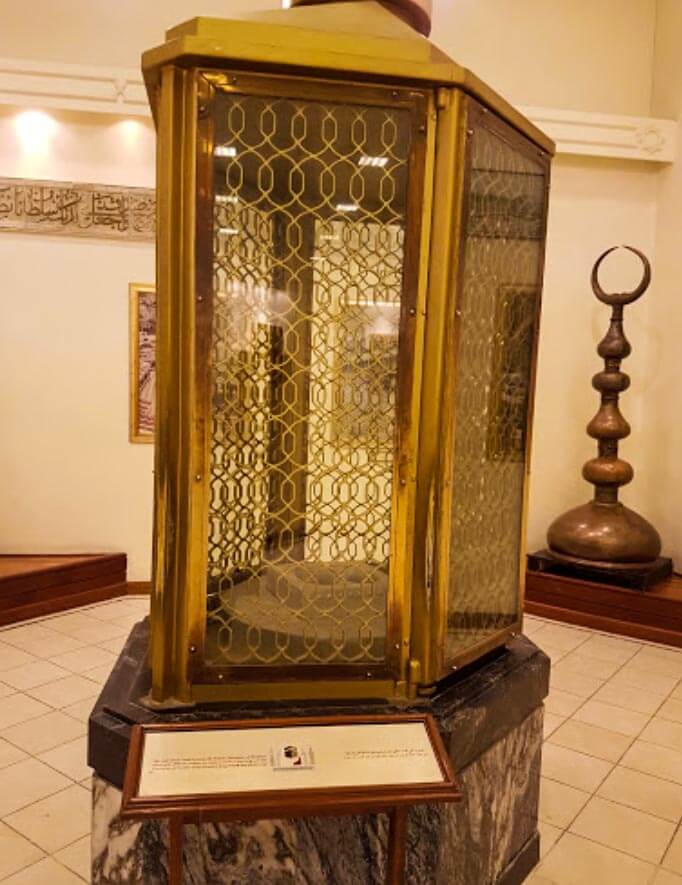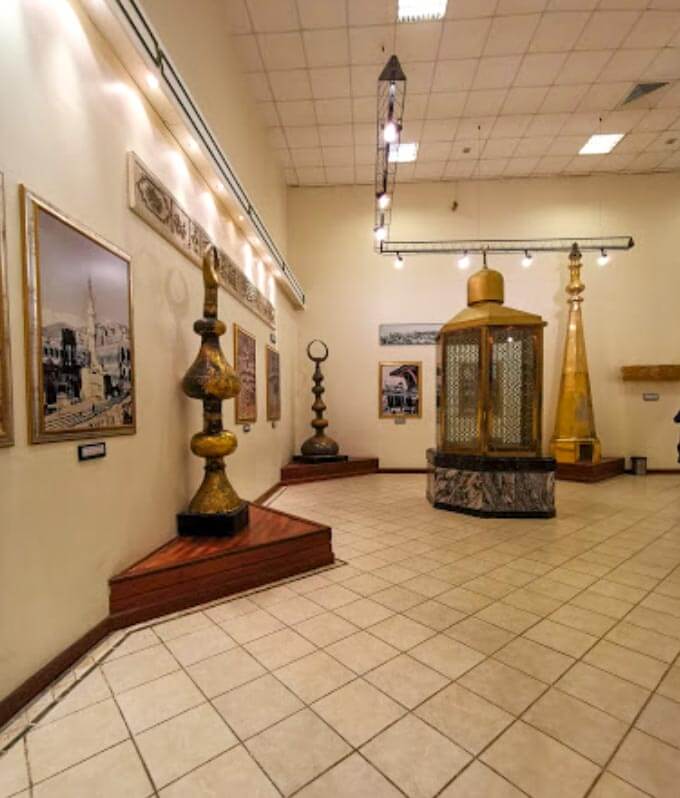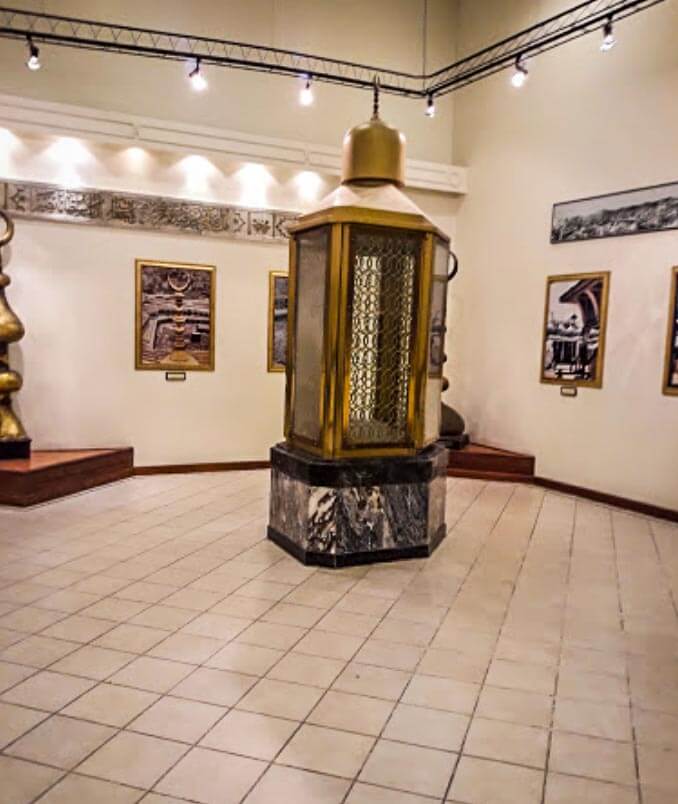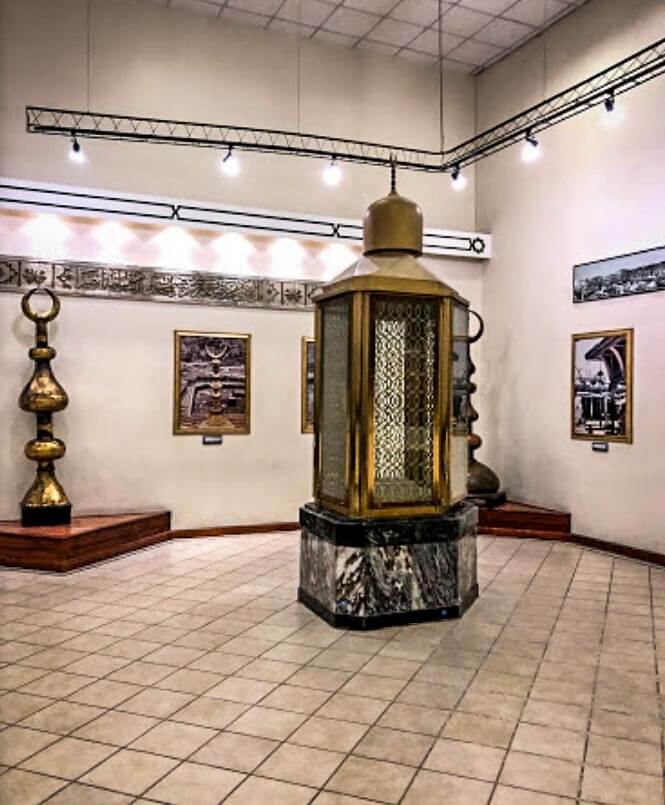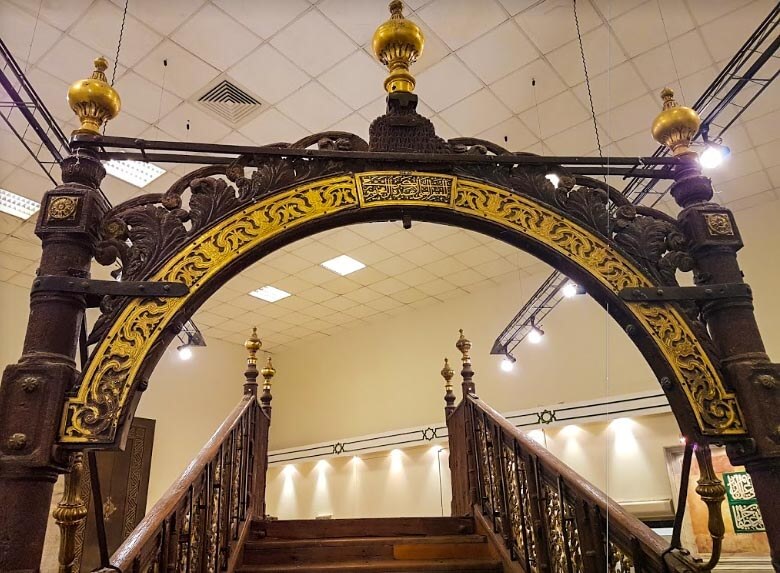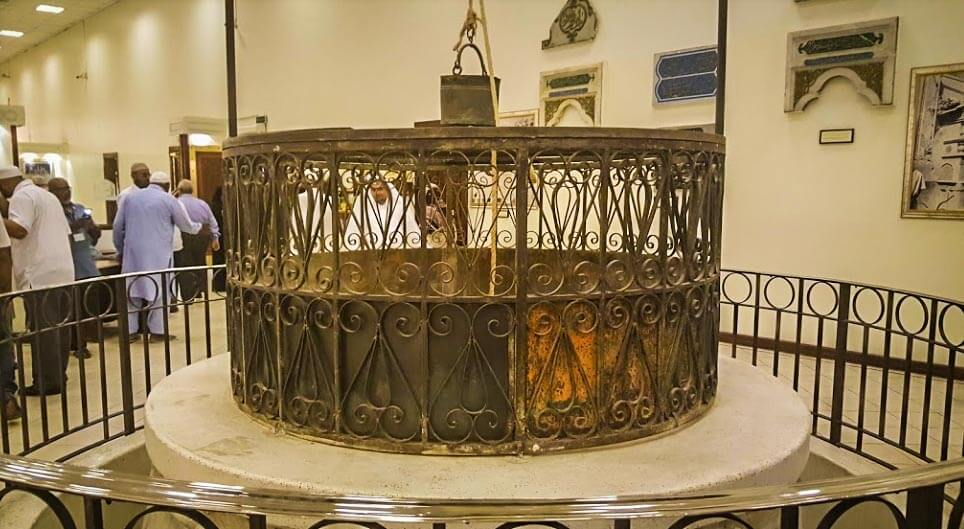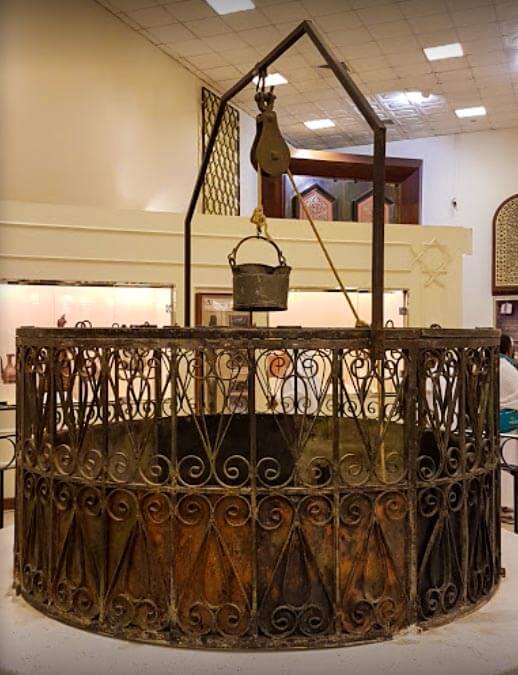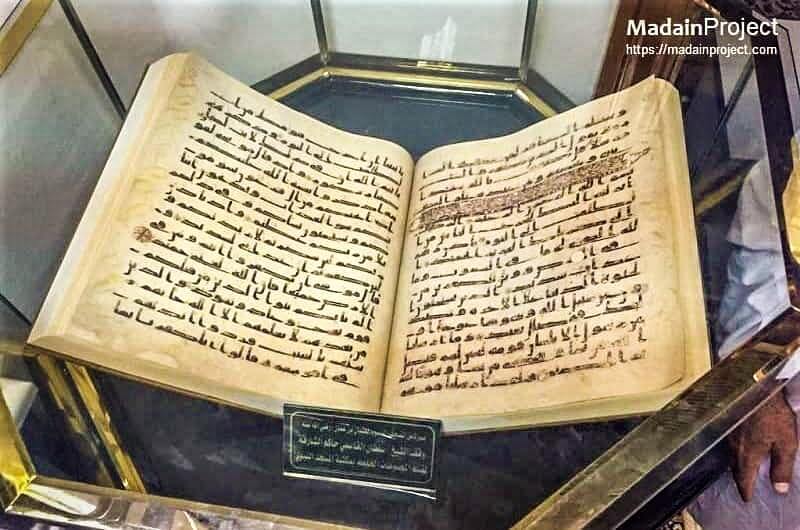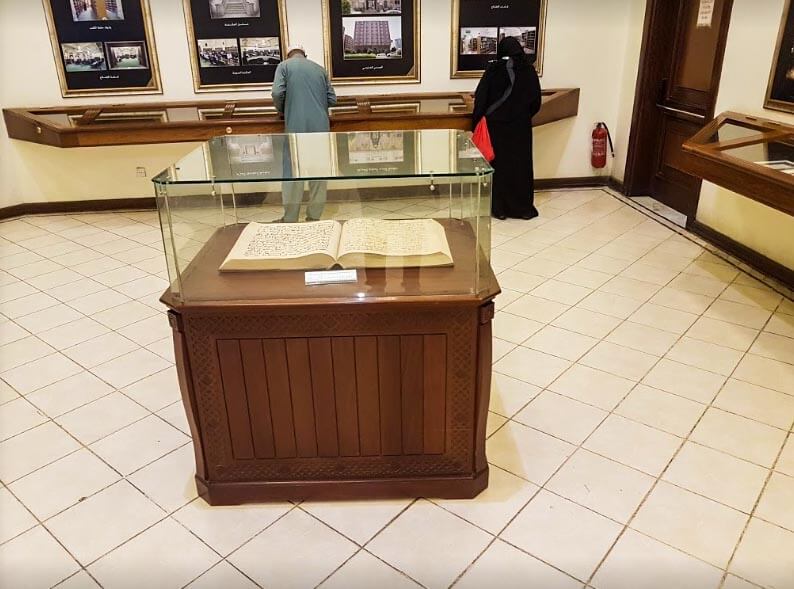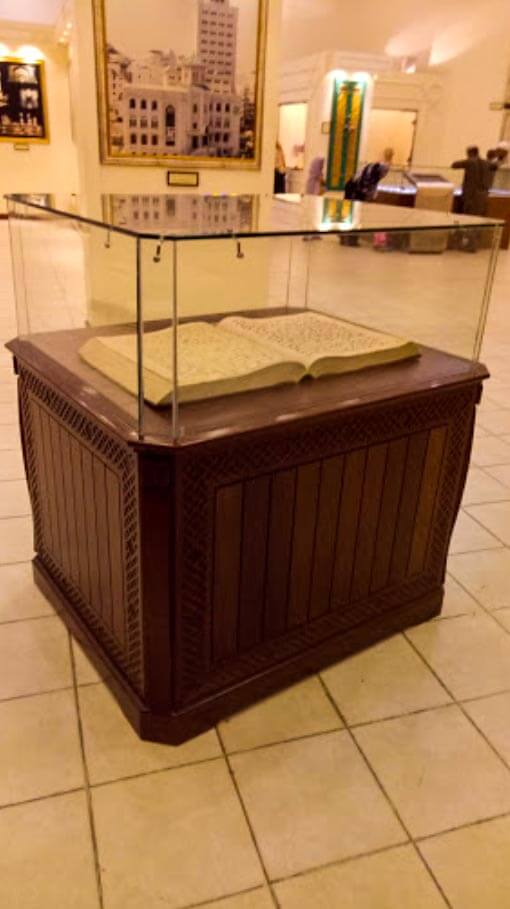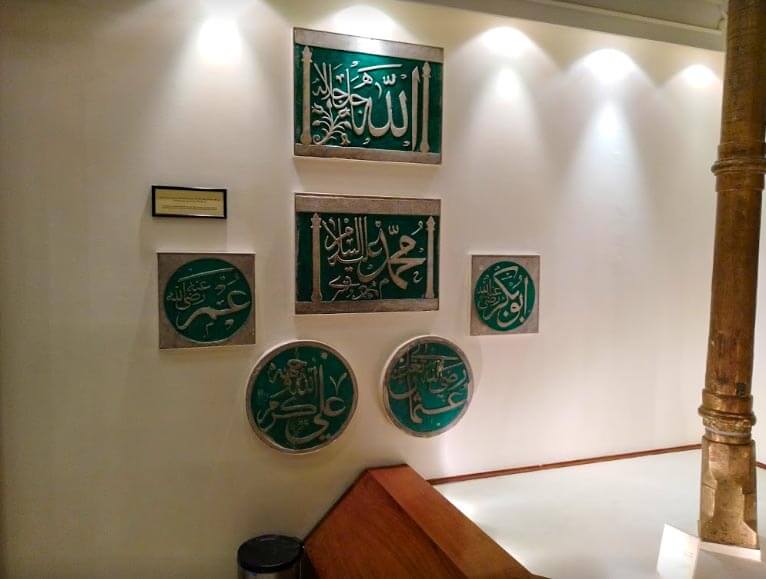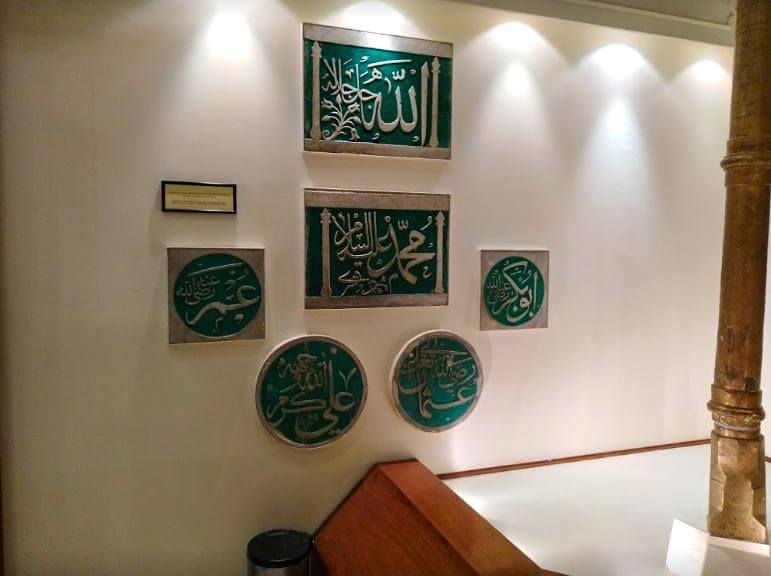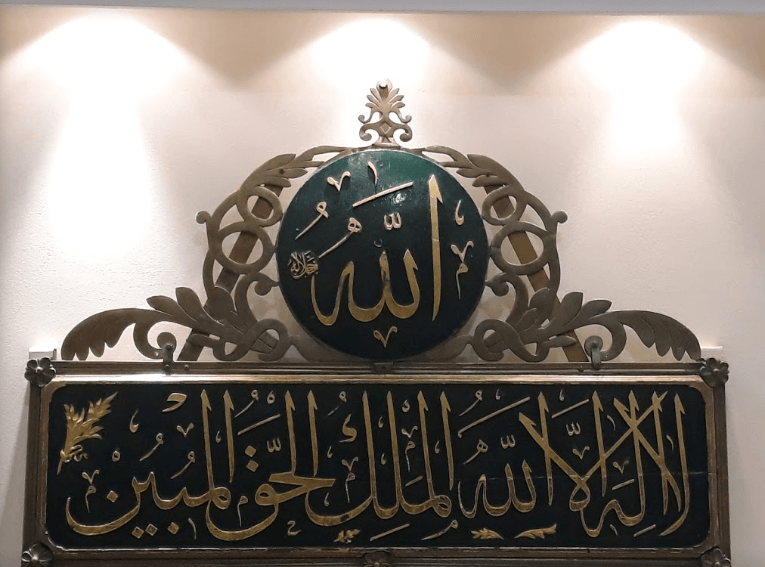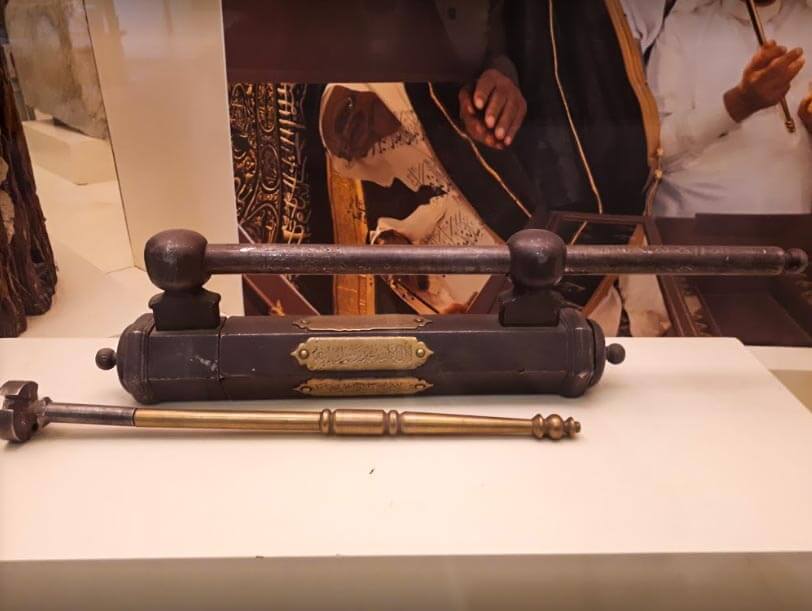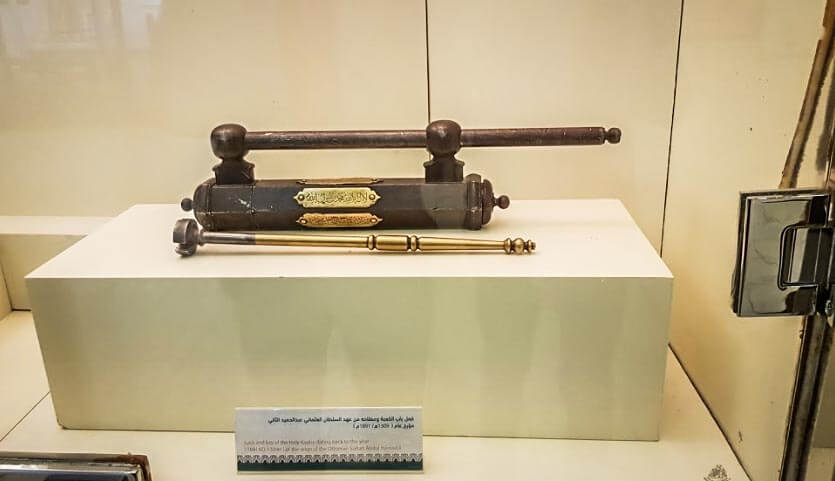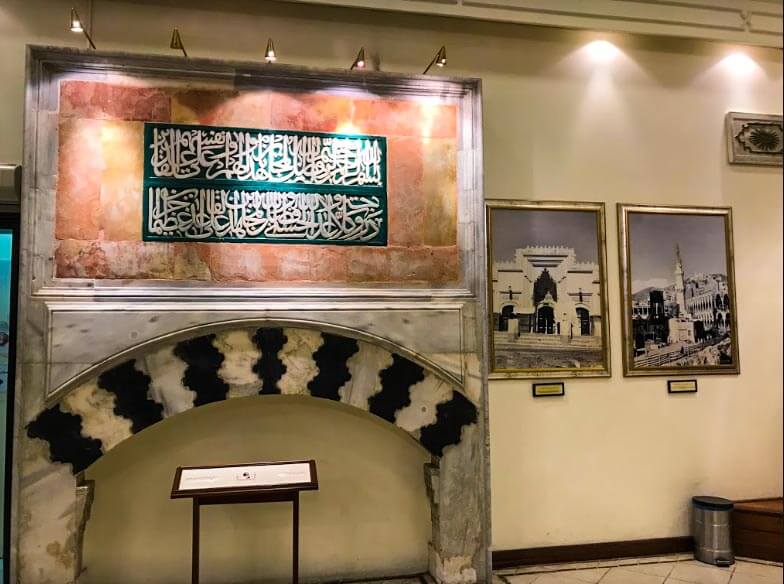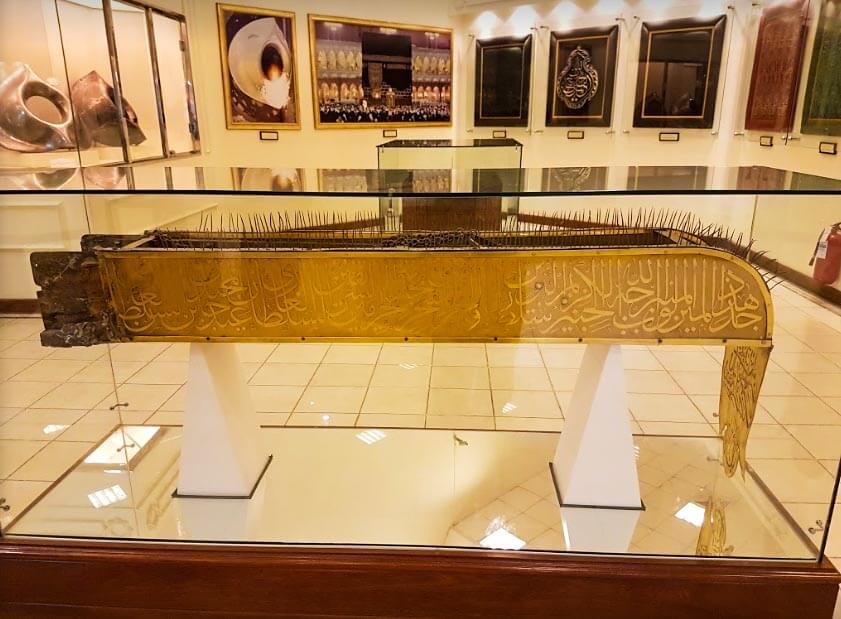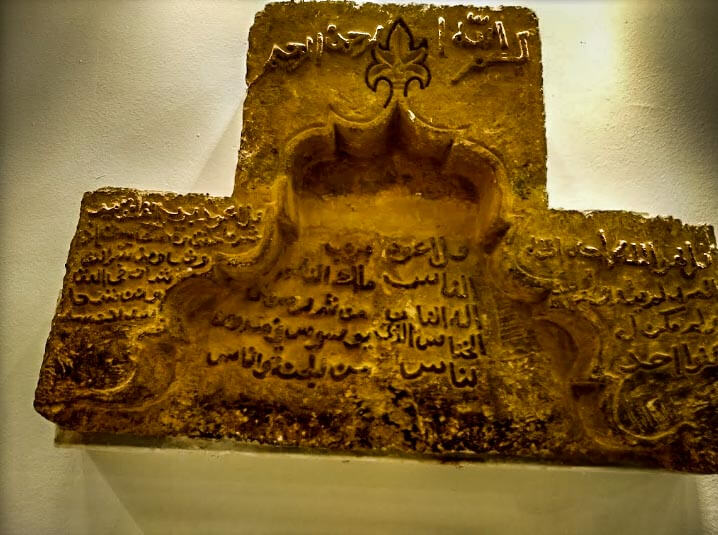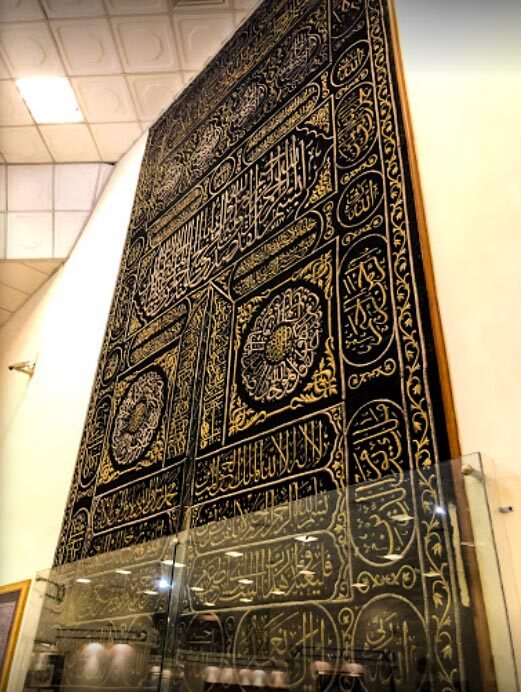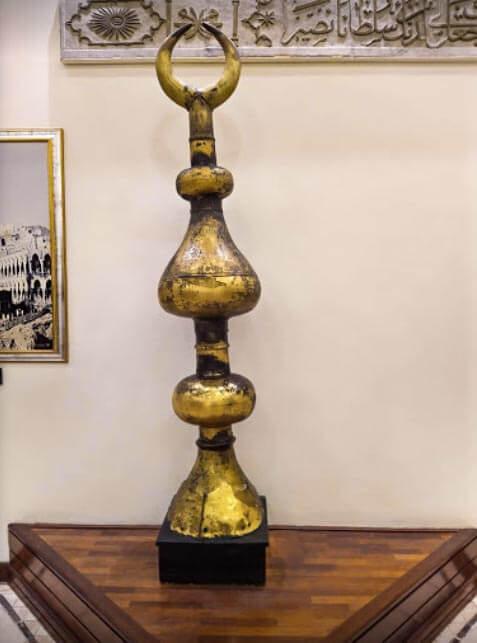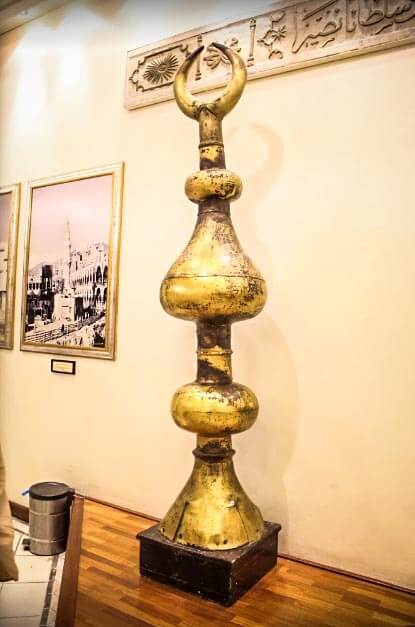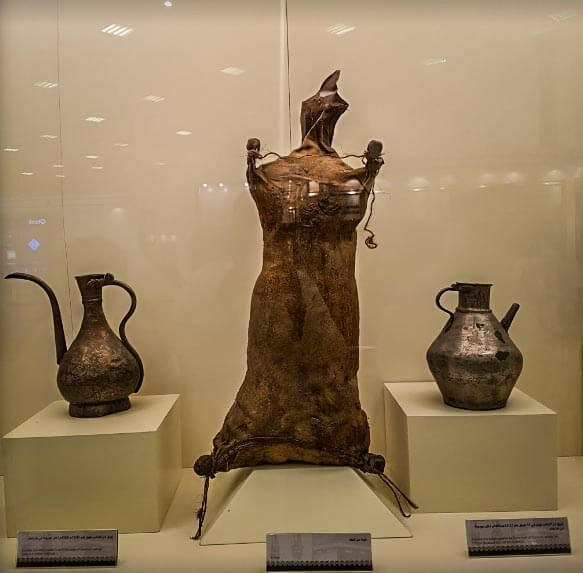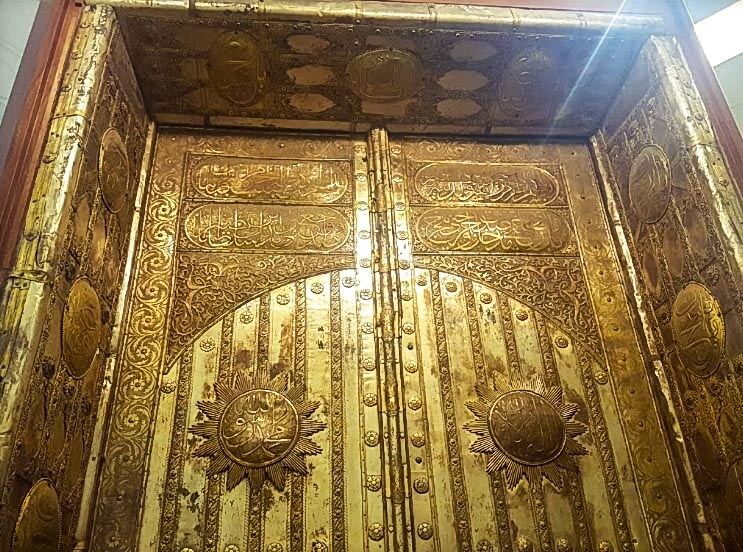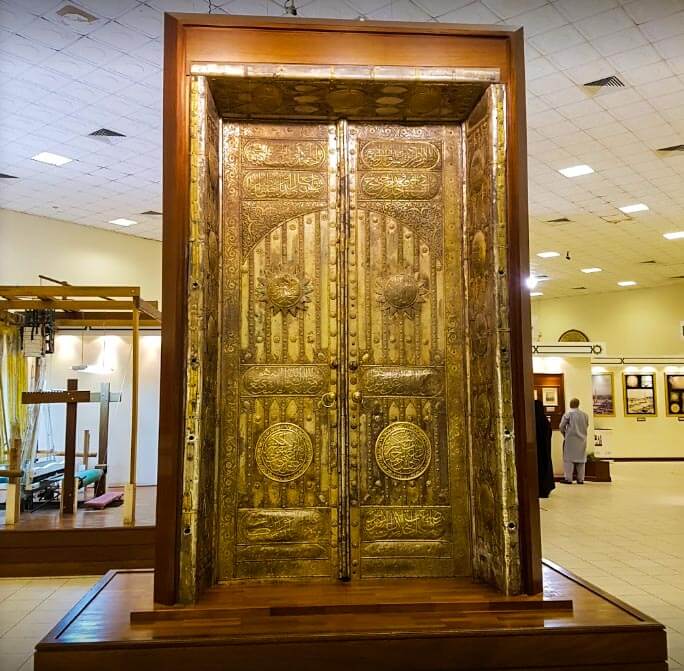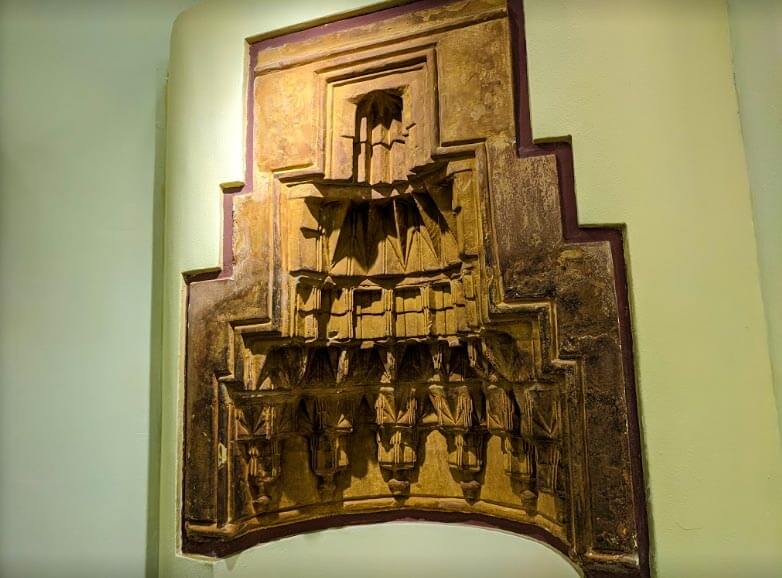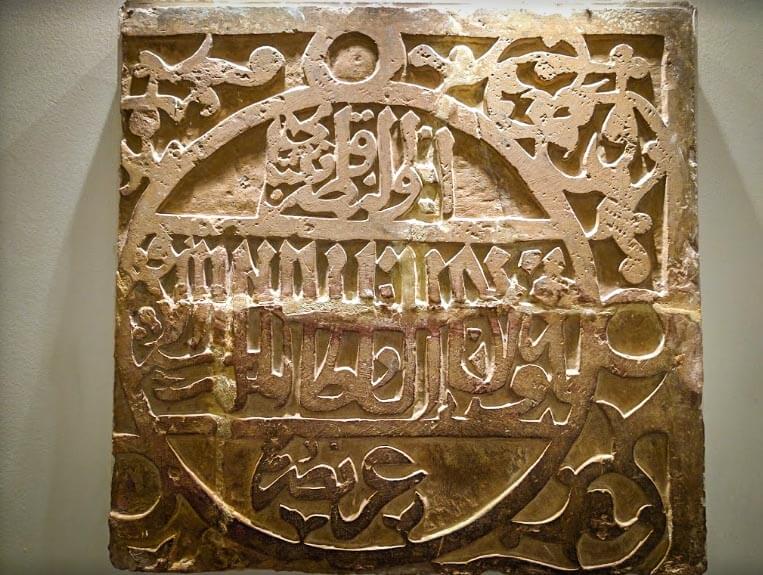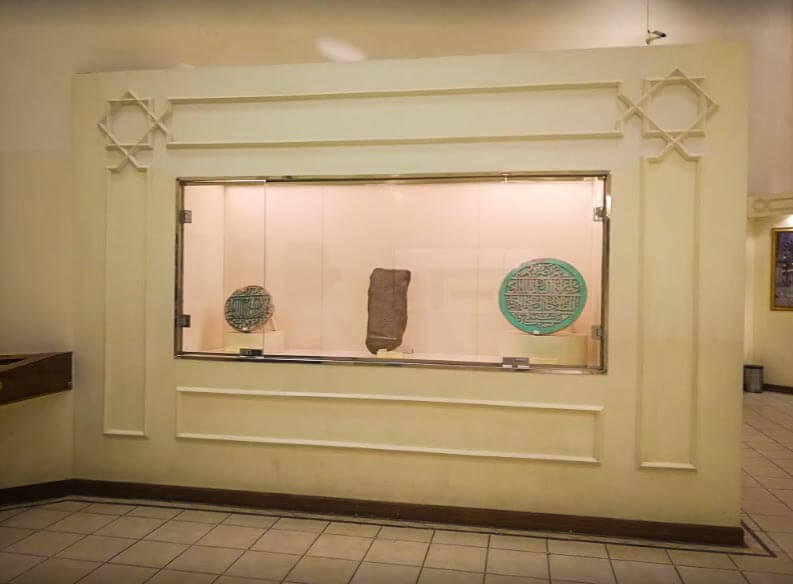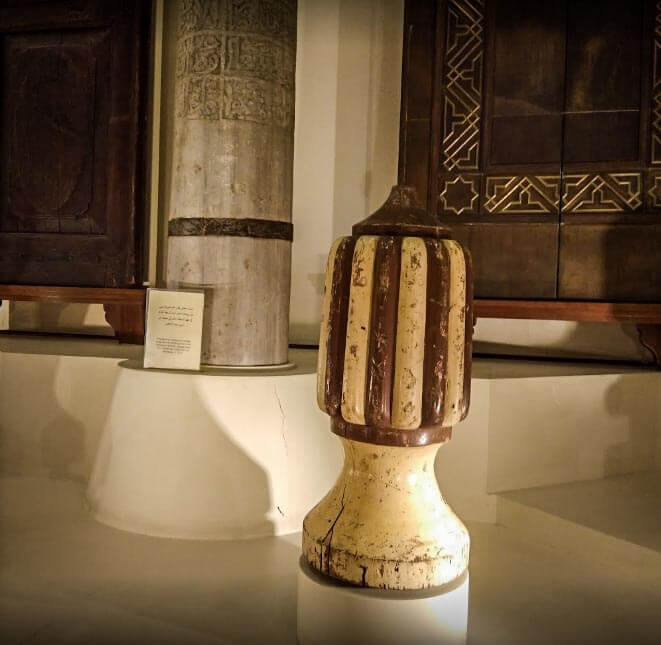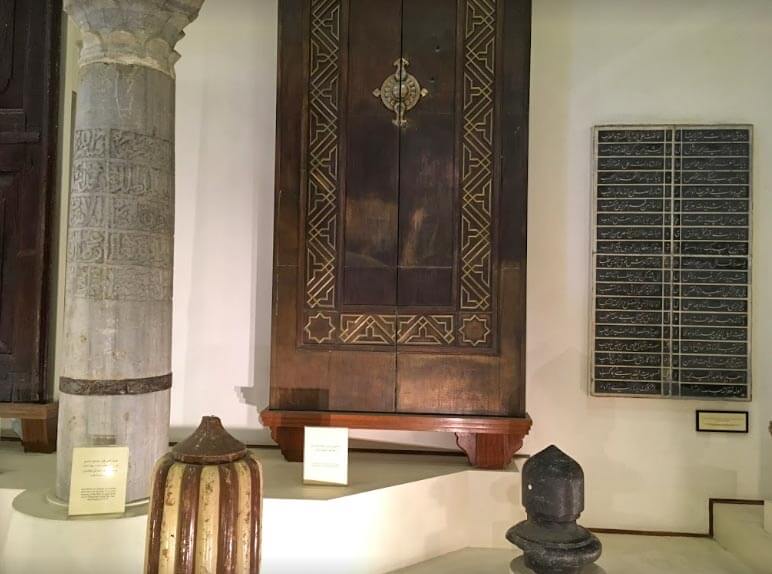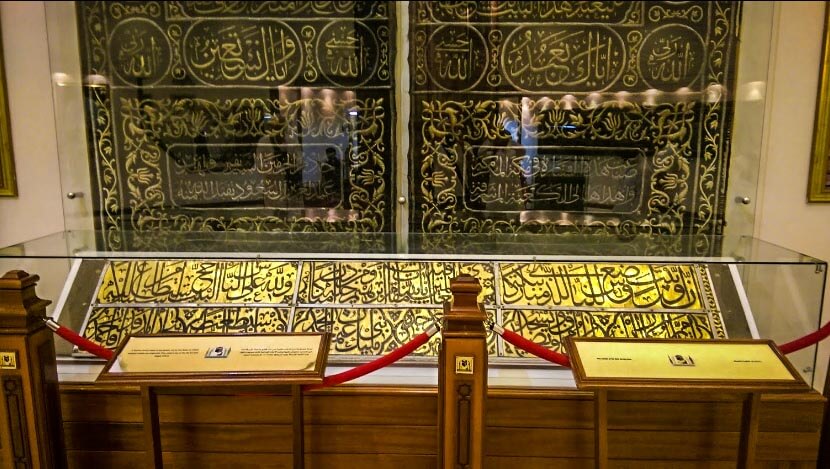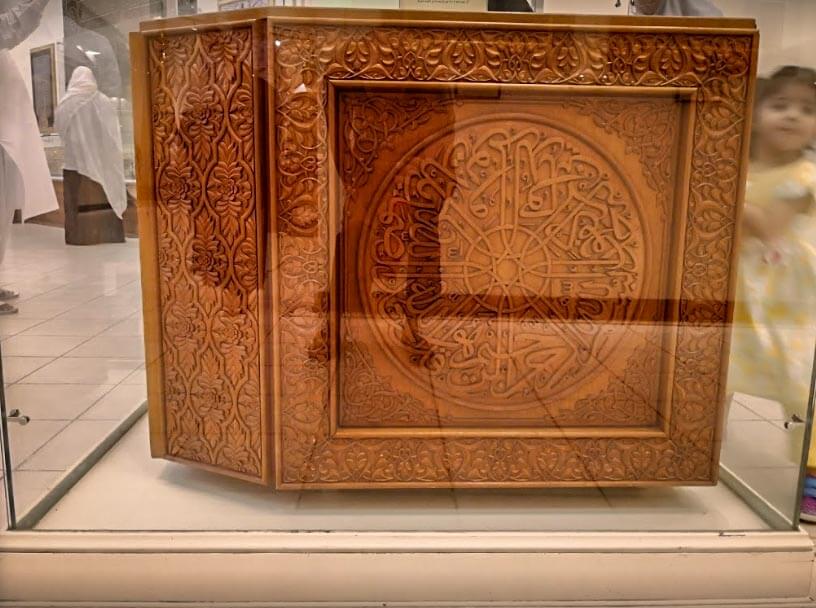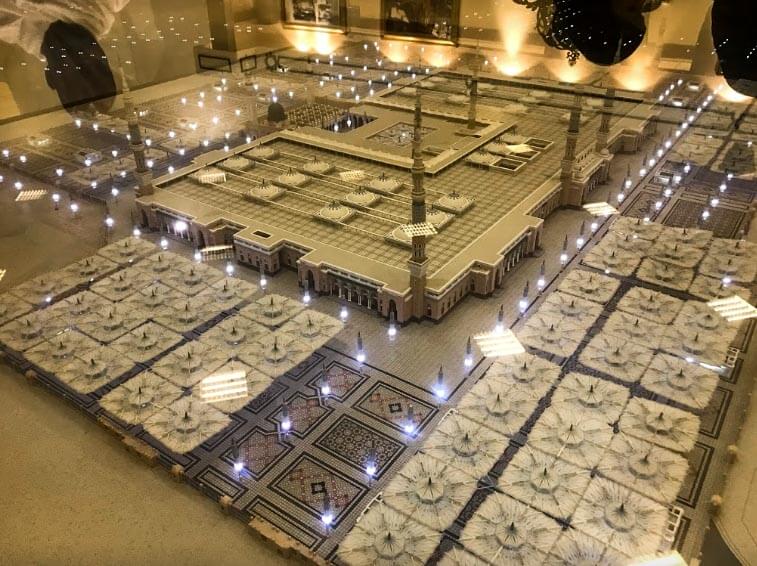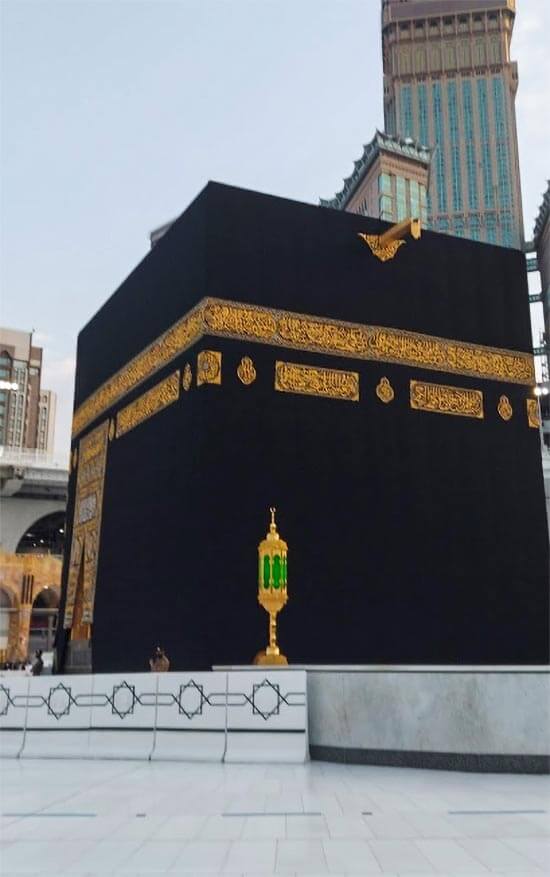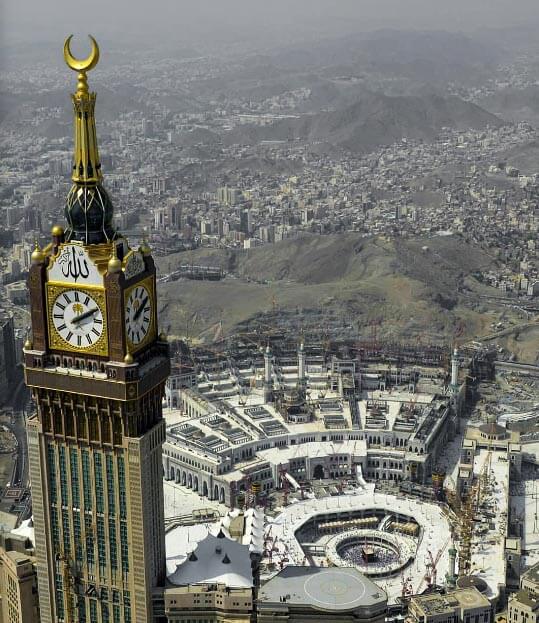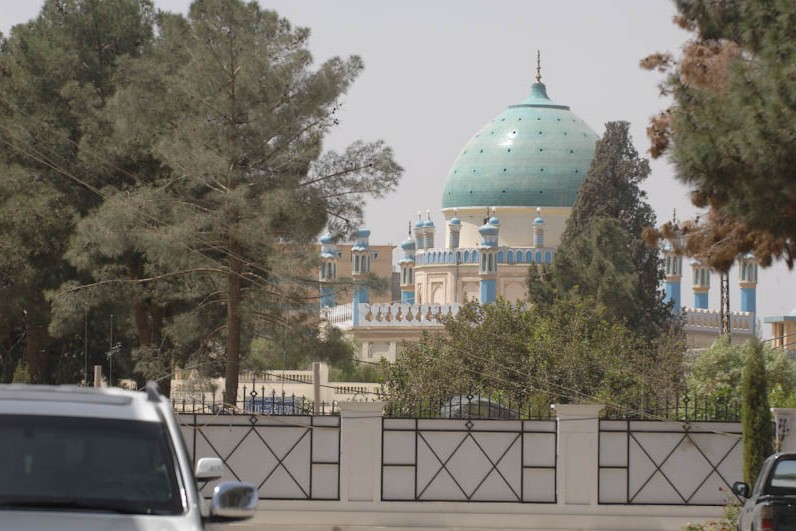Mecca Sharif, Saudi Arabia
Outside View
This is the Outside view of the Museum
Brass head of the pulpit
Brass head of the pulpit made during the reign of Sultan Suleiman al-Qanoony, circa 10th century Hejrah. The Ottoman minbars usually were executed in two distinctive fashions, one of which was a wooden one with and elongated conical cap like this one.
The door of Kaaba that was used until 1937
The door of Kaaba that was used until 1937/38 (inspect) CE. There’s an inscription on the door that suggests that it was first fitted to the Kaba in 1636. Over the centuries the Kabah has been fitted with elaborately decorated doors like this one. The door also bears an inscription of the Shahadah (inspect) in Arabic in it’s upper part. It’s an iconic symbol of Arabia’s Islamic History
Cassing of Maqam Ibrahim
Cassing of Maqam Ibrahim (station of Abraham) used up until the time of King Fahad’s (bin Abdulaziz) expansion of Masjid al-Haram. The Maqām Ibrāhīm (مَـقَـام إِبْـرَاهِـيْـم) is a stone associated with Abraham, Ishmael and their rebuilding of the Ka’bah. According to Islamic tradition, the imprint on the stone came from Abraham’s feet, it appeared when Abraham stood on the stone while building the kaaba
Staircase to Kaaba
A teak-wood stair case, used to enter Kaba, is placed near the main entrance to the museum complex. The floor of Kabah and the entrance is about 2.2 meters (7.2 feet) higher than the Mataf area, consequently a staircase is needed to enter the sacred shrine. Over the centuries several of these were built by Muslim rulers or other prominent Muslims to be used in Masjid al-Haram. This staircase dates back to the reigh of Ottoman Sultan Mahmud II.
Mouth-piece of Bir e Zam Zam
Mouth-piece of Bir e Zam Zam (ZamZam Well) with outer ring and covering. The pully at the top dates back to the end of the fourteenth century Hijrah (circa. 1970 CE). The bucket made of brass dates back to the early decade of fourteenth century Hijrah (circa. 1900 CE)
A door belonging to Prophet’s Mosque at Medina
A door belonging to Prophet’s Mosque at Medina (large door at the right), dating back to the reign of King Abdul Aziz al-Saud. The door panels of an Ottoman era pulpit (smaller green door to the left with inlaid golden patterns) in Prophet’s Mosque, made at the orders of Sultan Murad III. The grill on the wall in the middle belongs to the Masjid an-Nabawi’s first Saudi construction.
A copy of Mushaf e Uthmani
A copy of Mushaf e Uthmani (Quran bearing the blood of third caliph Uthman) produced during Era of Uthman ibn Affan. The original is preserved in the Topkapi palace, Istanbul, Turkey. According to tradition the original manuscript of this copy bears the marks of the blook of the third Caliph Uthman ibn Affan, when he was struck on head by rebels (this tradition has no verifiable sources, it is merely a speculation)
Six marble tiles (inspect) on which are engraved the word Allah the name of the Prophet Muhammad and the names of the Four Caliphs
Six marble tiles (inspect) on which are engraved the word “Allah” the name of the Prophet Muhammad and the names of the Four Caliphs may Allah be pleased with them dating back to 1299 Hijrah. The top center rectangular tile bears the inscription of Allah, middle rectangular tile bears the inscription Muhammad, ‘alih as-salam (Muhammad, peace be upon him). From right to left, abu Bakr, Uthman, ‘Ali, Umar the four rightly guided caliphs. Four poetry tiles (inspect) recording the contribution of Sultan Abdul Majeed I.
Front piece of brass fixture panel bearing one of the verses from Qur’an
Front piece of brass fixture panel bearing one of the verses from Qur’an, it was affixed at the space between the Minbar and Mehrab at the Masjid al-Nabawi in Medina. The circular inscription at the top bears Allah, second rectangular inscription reads; la ilaha illallah al-malik al-Haqq al-Mubeen (translation: There is no power except Allah, the King, the Right, the Manifest). It is one of the calligraphic inscriptions around the Mehrab Nabawi.
Lock and key of the Holy Kaaba 1309H
Lock and key of the Holy Kaaba 1309H (1892) made during the reign of the Ottoman Sultan Abdul Hamid II
Marble arch facade to one of the doors to the Masjid al-Haram
Marble arch facade to one of the doors to the Masjid al-Haram dating back to the tenth century Hejrah
Meezab
Meezaab e Rehmah, the gutter of Ka’bah, made of wood and platted with gold from outside and with lead from the inside. It bears the name of Sultan Mahmud Khan son of Sultan Abdul Hamid Khan.
A severly deteriorated section of one of the Bait ul-Allah’s three interior pillars
A severly deteriorated section of one of the Bait ul-Allah’s three interior pillars, dating back to the time of Abdullah ibn Zubair circa 65 Hj.
One of the Ka’bah’s immense wooden columns
One of the Ka’bah’s immense wooden columns employed by Abdullah b. al-Zubayr, post the destruction of Mosque in the civil war with Umayyads, is still preserved in a Museum of the architecture of the two Holy Mosques in Makkah. There are three wooden pillars inside Kaaba today, dating back to 1990s. ʿAbd Allāh ibn al-Zubayr ibn al-ʿAwwām (May 624 — October/November 692) was the leader of a caliphate based in Mecca that rivaled the Umayyads between 683 until his death. Throughout his opposition of Umayyad Caliphate, Ibn al-Zubayr used the Haram sanctuary as his base of operations and it was twice besieged, in 683 and 692. He rebuilt it following severe damage during the first siege, but his changes were later reversed.
The Bismalah and the two Suras of An-Nas and Al-Falaq
The Bismalah and the two Suras of An-Nas and Al-Falaq engraved on Ash-Shumaisi molding to the twelfth century of the Hijrah.
The old external curtain of Kabah’s door to the left of the door
The old external curtain of Kabah’s door to the left of the door
Two of the crescent belonging to the Haramain al-Sharifain
Two of the crescent belonging to the Haramain al-Sharifain, one (left) belongs to Masjid al-Haram and one in the background belongs to one of the Minarets of the Masjid al-Nabawi.
From left to right A brass urn
From left to right: A brass urn (inspect, extreme left) used to fetch water from the well of Zam Zam (Bir e ZamZam). Another brass urn (left) that was to be in the well to be used for Wudu and pouring Zam Zam water. A goat skin (center) used for carrying water from an undated period.
A door of Qiblah
A door of Qiblah, dating back to the reign of King Abdul Aziz al-Saud.
A slab of al-Shumaisi stone
A slab of al-Shumaisi stone, bearing the name of memluk Sultan Qaitabey, dated back to the early sixteenth century. The inscription is inside a disc which in turn is surrounded by interlaced floral patterns. The Sultan al-Ashraf Qa’it Bey was one of the most active Mamluks in affecting and influencing the urban fabric, not only of the holy city of Mecca, but also the city of the Prophet Muhammad, Medina, which, too, was a pilgrimage site.
One of smaller arched Muqqarans of Bab e Safa
One of smaller arched “Muqqarans” of Bab e Safa, made out of al-Shumaisi stone, dating back to 1600 CE removed during the early twentieth century, and placed here in 2000 CE. It is surprisingly similar to the Cotton Merchant’s Gate of al-Aqsa Compund.
Marble slab recording the deeds of the Ottoman Sultan
Marble slab recording the deeds of the Ottoman Sultan Muhammad IV bin Ibrahim I dating back to the eleventh century Hijrah
A collection of items from the Masjid al-Haram’s older contributions
A collection of items from the Masjid al-Haram’s older contributions, including an inscription on the white marble pillar (inspect) dating the building of one of the minarets of al-Masjid al-Haram to 772 AH/ 1370 CE during the rule of the Mamluki Sultan Sha’ban b. Husayn. Four marble tiles (inspect) with engraved verses of poetry recording the contribution of Sultan Abdul Majeed I to the Holy Mosque dating back to the mid thirteenth century Hijri (1258 Hj. / 1890 CE).
The clock (left) that was used in the Prophet’s Mosque
The clock (left) that was used in the Prophet’s Mosque and may have been one of the clocks sent by Sultan Abdul Majid I to Masjid an-Nabawi.
Six piece engrave iron board bearing the verses from Quran
Six piece engrave iron board bearing the verses from Quran, that used to be affixed with one of the walls of Ka’abah.
One of the incense (البخور) tables kept inside the Ka’abah
One of the incense (البخور) tables kept inside the Ka’abah. It is used to not only store the fragrances and incense but also as a padestal where the incense is burnt.
Pieces of Kiswa from different times
Pieces of Kiswa from different times, a piece of Kiswa (covering of the holy Ka’ba) named “Qindeel” (far left: inspect), it bears the engraved first verse of al-Fatiha (first chapter of Quran) “Al-Hamd ul-Lillah e Rabb-il ‘Aalameen” (Praise be to Allah, the Lord of the universe)
Masjid an nabawwi model
Coordinates: 21.433875, 39.754338


